Dresden

Home | Hamburg | Lauenberg | Tangermünde | Berlin | Wittenberg | Torgau | Meissen | Dresden | Saxony | Prague
We begin this page with some history. The bombing of Dresden took place in the final months of the Second World War. In four raids between 13 February and 15 February 1945, 1,300 heavy bombers of the British Royal Air Force (RAF) and the United States Army Air Force (USAAF) dropped more than 3,900 tons of high-explosive bombs and incendiary devices on the city. The resulting firestorm destroyed 15 square miles (39 square kilometres) of the city centre and caused thousands of civilian casualties.
The pile of rubble just left of center is what remained of the Frauenkirche.
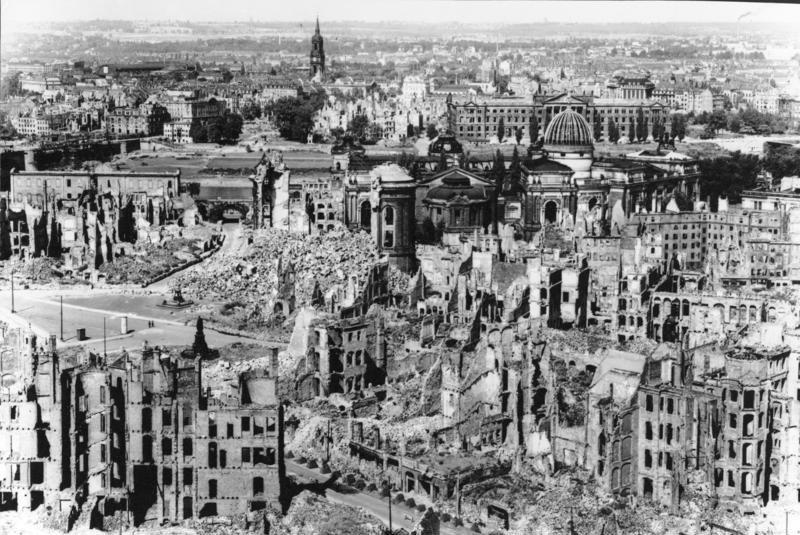
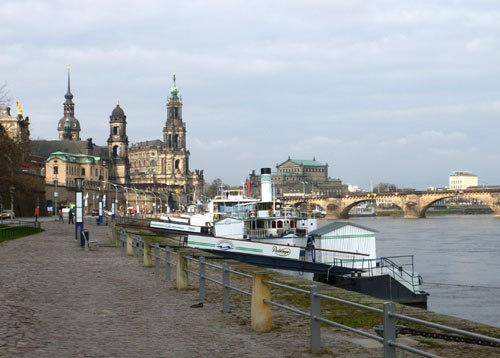
Now we are in the present and we can begin to see how Dresden has been restored. From our ship we began our time in Dresden with a city walk. We began with an area called the Brühl Terrace.
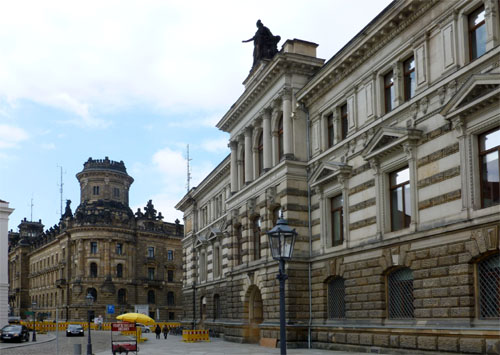
There were many beautiful buildings in this area of the city. This is the Albertinium, a modern art museum. It also was destroyed in the February 13, 1945 bombing of Dresden and was rebuilt by 1953.


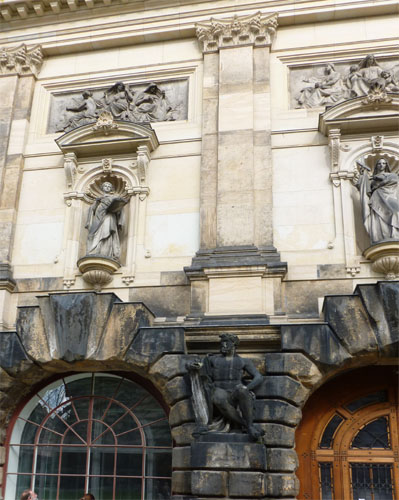
Our guide pointed out that the very darkest stones and statues are those that were in the hottest part of the rubble. Those not as dark also survived the bombing, but were not as bady burned. The light stones are new, of a similar sandstone as the original.

This is the Dresden Academy of Fine Arts and the glass dome is sometimes called the "lemon squeezer."

To return to the story of the bombing, these were the remains of the Frauenkirche from 1945 to 1985. Note that the statue of Martin Luther survived.
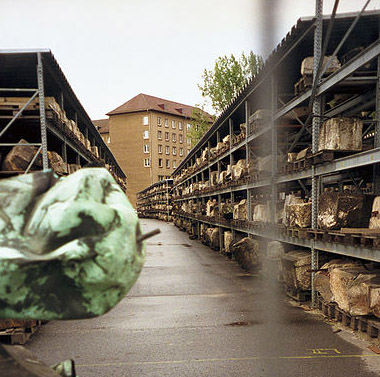
The heap of rubble was documented and carried off stone by stone. The approximate original position of each stone could be determined from its position in the heap. Every usable piece was measured and catalogued. A computer imaging program that could move the stones three-dimensionally around the screen in various configurations was used to help architects find where the original stones sat and how they fit together. Of the millions of stones used in the rebuilding, more than 8,500 original stones were salvaged from the original church and approximately 3,800 reused in the reconstruction.

This is the restored Frauenkirche, an outstanding example of the renovation of Dresden. As the older stones are covered with a darker patina, due to fire damage and weathering, the difference between old and new stones will be clearly visible for a number of years after reconstruction. Notice that the darker parts at the left and right are those which best survived the bombing.
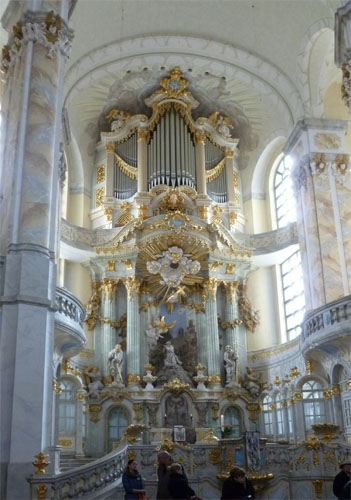
The interior of the Frauenkirche. Two thousand pieces of the original altar were cleaned and incorporated into the new structure.
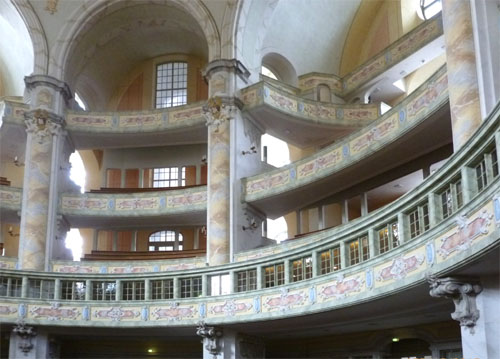
The balconies of the church.
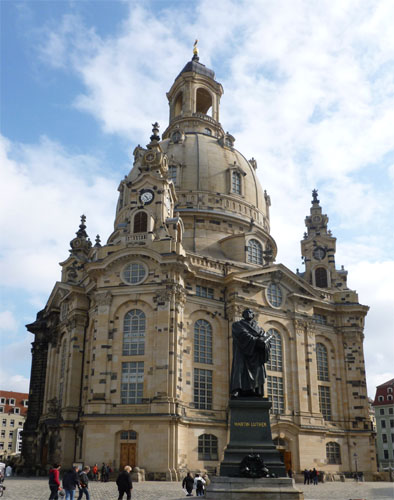
A view of the Frauenkirche from the other side with the statue of Martin Luther in the foreground.
 An interesting sight is a large mural of a mounted procession of the rulers of Saxony.
It was originally painted between 1871 and 1876 to celebrate the 800th anniversary of the Wettin Dynasty, Saxony's ruling family. In order to make the work weather proof, it was replaced with about 23,000 Meissen porcelain tiles between 1904 and 1907. With a length of 102 metres (335 ft), it is known as the largest porcelain artwork in the world. The mural displays the ancestral portraits of the 35 margraves, electors, dukes and kings of the House of Wettin between 1127 and 1904.
An interesting sight is a large mural of a mounted procession of the rulers of Saxony.
It was originally painted between 1871 and 1876 to celebrate the 800th anniversary of the Wettin Dynasty, Saxony's ruling family. In order to make the work weather proof, it was replaced with about 23,000 Meissen porcelain tiles between 1904 and 1907. With a length of 102 metres (335 ft), it is known as the largest porcelain artwork in the world. The mural displays the ancestral portraits of the 35 margraves, electors, dukes and kings of the House of Wettin between 1127 and 1904.
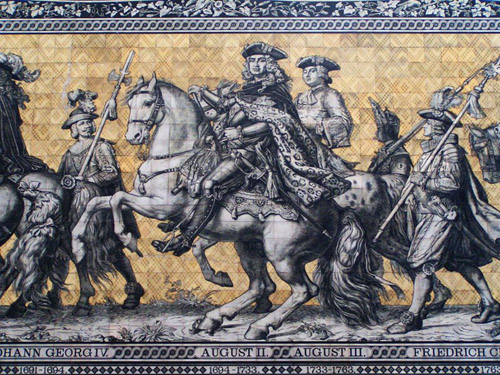
A closeup of two Saxon electors, August II (ruled 1694-1733) and August III (1733-1763.)

The restored Dresden Opera Hall. In 1945 the building was destroyed by the bombing of Dresden and subsequent firestorm. Exactly 40 years later, on February 13, 1985, the opera's reconstruction was completed. It was rebuilt to be almost identical to its appearance before the war. It reopened with the opera that was performed just before the building's destruction in 1945, Carl Maria von Weber's "Der Freischütz".
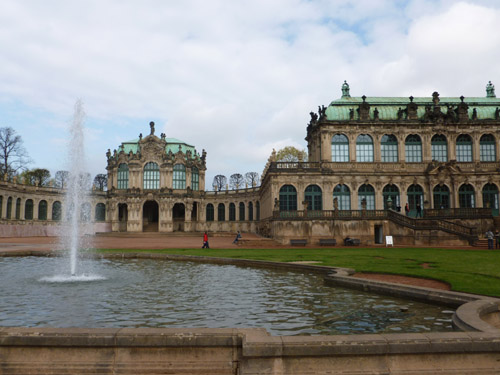
An interesting courtyard in the Royal Palace, which was first built by Augustus II from 1710-1728.

Here we were told some of the story of the restoration by a lady who had helped collect the rubble in the devastated city. She described it as "an adventure."
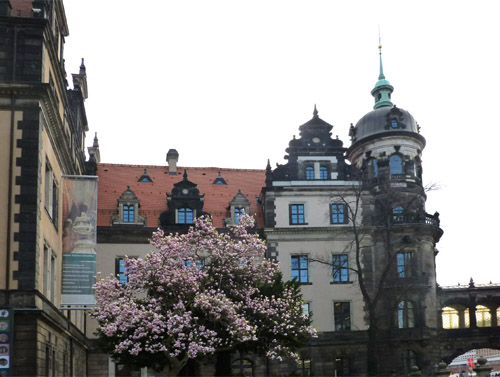
The entrance to the historic Green Vault in the Royal Palace. The Green Vault is a unique historic museum that contains the largest collection of treasures in Europe. Founded by Augustus the Strong in 1723, it features a rich variety of exhibits from the Baroque to Classicism. It is named after the formerly malachite green painted column bases and capitals of the initial rooms. After the destruction of the Second World War, the Green Vault has been completely reconstructed. Today, its treasures are shown in two exhibitions: The Historic Green Vault is famous for its splendors of the historic treasure chamber as it existed in 1733.
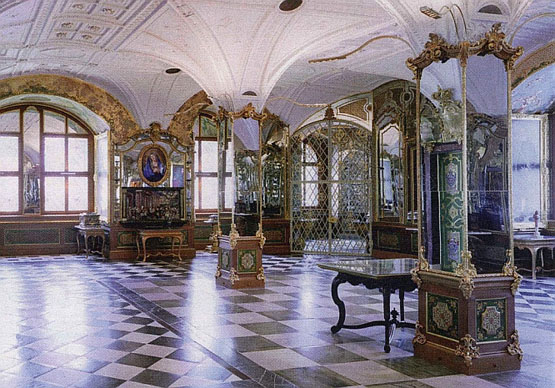
The Historic Green Vault consists of 9 rooms and one entrance chamber. The first room, the Amber Room, contains artworks made of amber, the second has ivory, the third white silver, the fourth silver gilt, the fifth called the Hall of Treasures, the sixth Coats of Arms, the seventh jewels, the eighth over 80 bronzes, and the last room contains Renaissance bronzes. Photography was not allowed so we have only one picture of the Hall of Treasures, taken from Wikipedia.
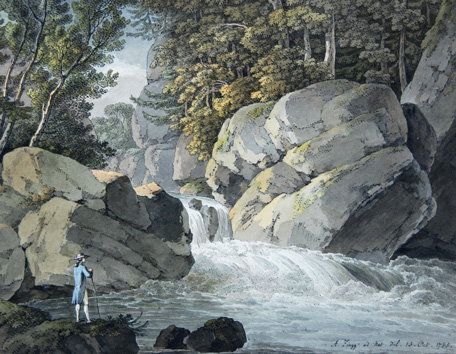
On another floor of was an exhibition of the work of the Swiss artist, Adrian Zingg (1734-1816). Zingg used Dresden as a base for exploring the countryside of the Elbe Sandstone Mountains, drawing numerous views of picturesque interest of what has since become known as the Saxon and Bohemian Switzerland.
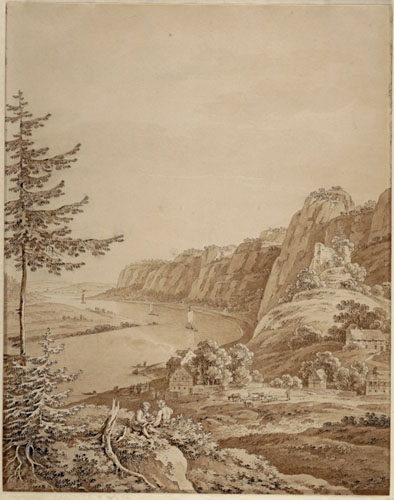
Another work by Zingg of the Bastei, which we will see tomorrow.
Next we sail to the Bastei in Saxon Switzerland.